We often blame human activities that go against our environment, as the reason behind natural disasters. Nature is often personified as the avenger of our misdeeds; an embodiment of our creator, who takes revenge on us by obliterating most of the human race, every now and then. The notion is debatable, but the ravages of nature are undoubtedly lethal. Be it a landslide or a deluge or an earthquake or a cyclone, natural disasters cause widespread woe and distress to their victims. Sometimes, these calamities are so deadly that it takes eras to rise from the debris that disasters leave behind. India, too, is no exception, where the nation has faced many such cataclysmic events over a span of several centuries. People of this country have suffered the most unimaginable of situations, including dire starvation, thirst, and disease. Death, in each instance, has been inevitable. As Canadian novelist William Deverell once rightly observed, “Our historical memory of natural disasters tends to be notoriously brief,” here’s a list of 15 worst natural disasters that have ever occurred in India, reminding you of all the annihilation that the population of the country has gone through.
1. Deccan Famine of 1632-33
This famine that occurred in 1632-33, during the reign of Mughal emperor, Shah Jahan, was caused due to the lack of food crops for three consecutive harvesting seasons. The dearth of food, increased hunger and the associated diseases ended up killing more than 20-lakh citizens of India.

Image Source
http://www.listotop.com/top-10-deadliest-natural-disaster-in-india/
2. 1737 Calcutta Cyclone
Also known as the Hooghly River Cyclone, the incident that took place in 1737 is still believed to be one of the worst in the history of natural disasters. The storm surge resulting from the cyclone that struck the low-lying regions of Bengal, led to the sinking of more than 20,000 ships, and the death toll in the city of Calcutta alone was 3000. Most buildings and houses collapsed, especially those that were built from thatch and mud.

Image Source
http://www.worldblaze.in/top-10-worst-natural-disasters-in-india-ever/
3. 1770 Bengal Famine
The Bengal Famine that struck people in 1770 was the reason behind more than 10 million people losing their lives. During this time, the British East India Company insisted on growing opium for export instead of the staple food crops. This caused widespread paucity of food required for the survival of Bengal’s population. Not only was Bengal affected, but also parts of present day Bihar and Odisha. Though warning signs started surfacing from 1768, the East India Company chose to ignore them, thus leading to the fatal famine that wiped out almost the entire population.

4. Coringa Cyclone of 1839
The Coringa Cyclone that struck the coasts of Andhra Pradesh on November 25, 1839, claimed the lives of almost three lakh inhabitants. An important harbor town, the cyclone also resulted in more than 25,000 shipwrecks. This significant city was turned into the state of a devastated village by the enormous 12-meter rise in sea level.

Image Source
http://kannadigaworld.com/news/vishishta/21607.html
5. The Great Famine of 1876-78
Another great tragedy for India, the Great Famine of 1876-78, affected the lives of more than 5.5 million people, residing in areas like Mumbai, Hyderabad, Chennai and Mysore. Not only was it caused by natural dearth of food crops, but also the harvesting of cash crops that were forced upon farmers.
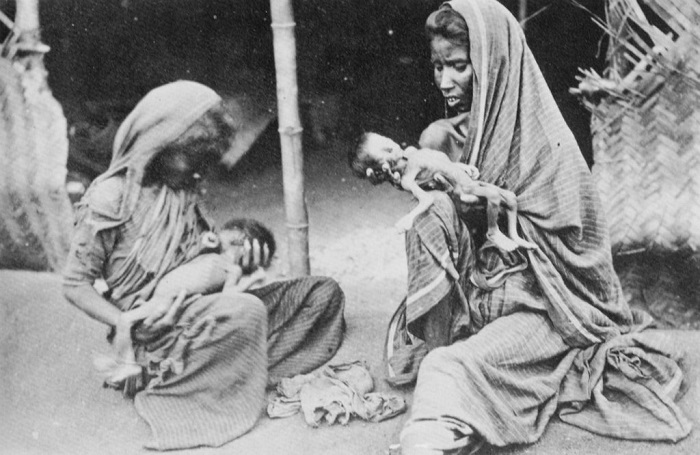
Image Source
http://www.museumsyndicate.com/item.php?item=65017
6. The Third Plague Pandemic
In the year 1855, China’s Yunan province was terrorized by the lethal bubonic plague, which travelled to India by the end of the century, causing the disaster known famously as the Third Plague Pandemic. Carried by infected rats, the disease claimed its victims within a span of two days. The epidemic was rampant in the cities of Kolkata, Mumbai, Pune, Chennai and Karachi. Within a week the death count crossed 34,000, and despite all efforts of the British Government to save the lives of those affected, most of the contaminated population could not survive. The plague continued for the next thirty years, killing more than 1.2 crore Indians.
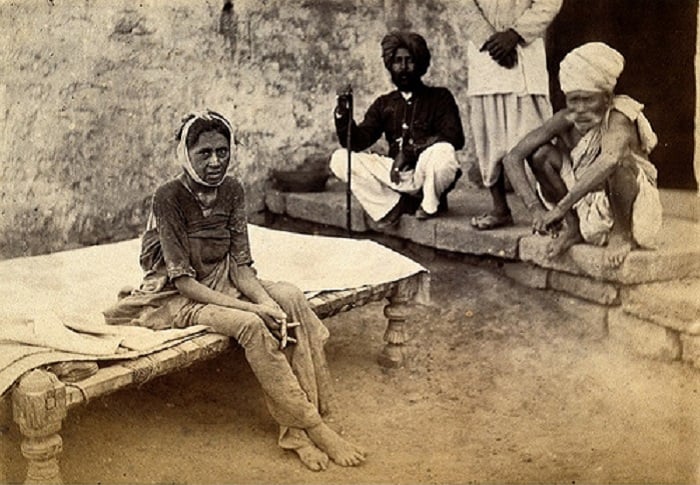
Image Source
http://thirdplaguepandemic.wikispaces.com/Third+Plague+in+India
7. 1943 Bengal Famine
One of the most lamentable incidents in the history of Bengal is the Famine of 1943, which unlike earlier similar episodes, obliterated most of the population of artisans and traders. After the nation saw food shortage for two consecutive years, people began spending all their money on their daily meals, and workers saw their income drop within days. Following the Japanese invasion of Burma, all supply of rice from the latter stopped coming into India, causing the death of almost 40-lakh people in the country.
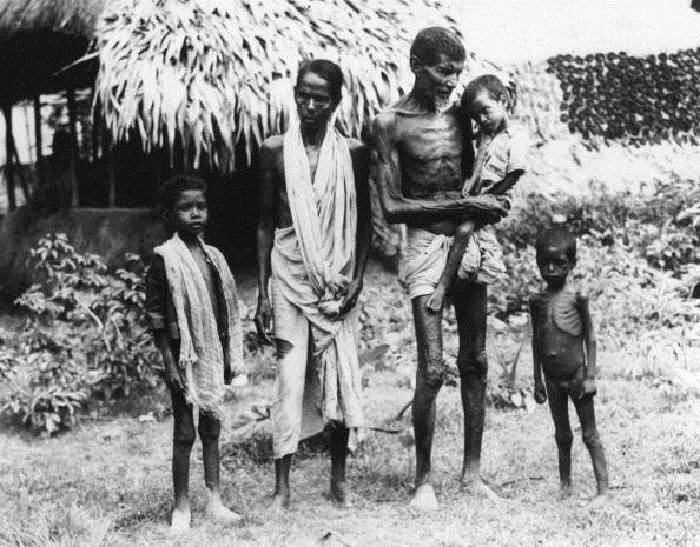
Image Source
http://asianhistory.about.com/od/Modern-India/ss/Bengal-Famine-1943.htm
8. 1979 Lahaul Valley Avalanche
In 1979, the Lahaul Spiti Valley in Himachal Pradesh faced excessive snowfall that ended up in a tragic avalanche. The disastrous landslide, which was the only such occurrence in the Himalayas, resulted in the deaths of 200 people who were submerged under 20 feet deep snow. The snow slide was so fatal that it is considered as one of the most dangerous in the history of avalanches in the world.

Image Source
http://www.huffingtonpost.ca/2015/02/16/alberta-bc-avalanche-warning_n_6689290.html
9. 1993 Latur Earthquake
The Latur earthquake that hit Maharashtra on September 30, 1993, was so crippling that 52 villages in Osmanabad and Latur were erased from the face of the earth. Having a magnitude of 6.2 on the Richter scale, the earthquake did more damage to life than expected owing to its stronger shock waves. It is believed that fault lines in this area were the major cause of this ruinous disaster. The destruction was so deadly that the epicenter, Killari, has left behind a large crater even today.
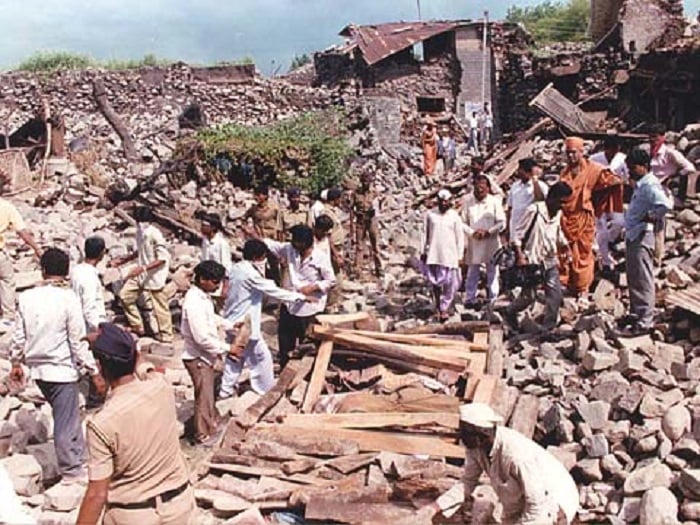
Image Source
http://susmitris.blogspot.in/2007/12/case-study-latur-earthquake-of-1993.html
10. Odisha Cyclone of 1999
One of the most catastrophic natural disaster that ever affected the Indian Ocean, the Odisha Cyclone of 1999 wreaked havoc from October 25 to October 28. The depression originated in the Malay Peninsula, but swiftly moved to India with the storm raging at 160 mph. Infamously known as the Paradip Cyclone, its death toll hit the 10,000 mark, and also caused irreversible vandalism on the inhabitants of the area.

Image Source
http://susmitris.blogspot.in/2007/12/case-study-latur-earthquake-of-1993.html
11. 2001 Gujarat Earthquake
On 26th January, 2001, an earthquake that measured 7.7 on the Richter scale, hit Gujarat and claimed the lives of more than 20,000 people. Though it lasted for approximately 42 seconds, the earthquake caused severe damage to 400,000 houses, and injured almost 167,000 people. Affecting the areas of Kutch and Bhuj, innumerable schools and hospitals were turned to rubble in seconds, and the entire population’s food and water became almost non-existent. What turned out to be the biggest blow was the destruction of the Bhuj Civil Hospital, thus hampering immediate medical attention to the affected. As a quick rescue measure, the defense forces of India came forward to offer their help till a Red Cross hospital was swiftly set up to provide necessary services.
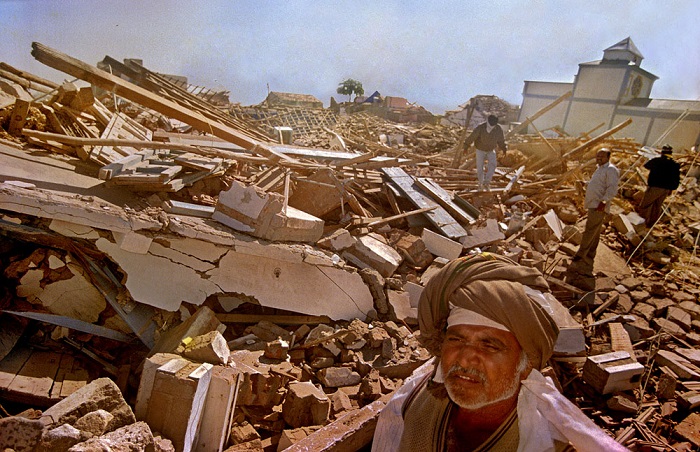
Image Source
http://www.nitinrai.com/gujarat-earthquake-photo-story/
12. 2002 Indian Heat Waves
In 2002, southern parts of India were faced with extreme heat waves that ended up taking the lives of many people. Most of the affected were those who were homeless. Andhra Pradesh was the worst hit, with all water bodies drying up quickly, and several animals and birds dying of thirst.
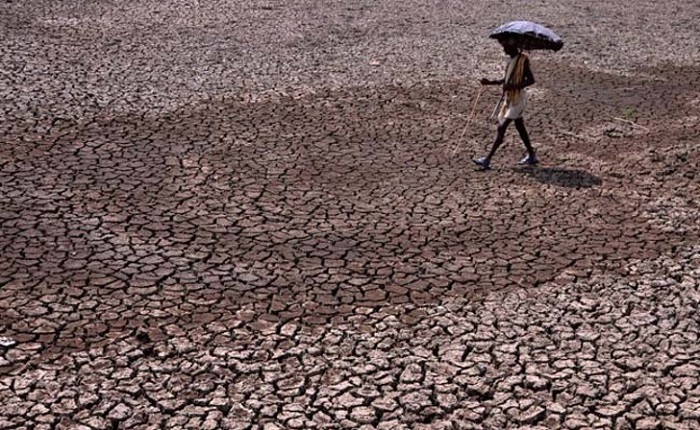
Image Source
http://inhabitat.com/indias-scorching-month-long-heatwave-kills-1400-and-melts-the-streets/agence-france-presse/
13. 2004 The Indian Ocean Tsunami
On December 26, 2004, the region around Sumatra, in Indonesia experienced an earthquake that measured a colossal 9.0 on the Richter scale. The deleterious earthquake not only took the lives of thousands in Indonesia, but also set off a tsunami in the Indian Ocean. The Indian Ocean Tsunami was so cataclysmic that countless people were left penniless without a shelter over their head. Also, almost 10, 136 inhabitants lost their lives, while more than 5832 people were nowhere to be found. Especially ravaged were the Andaman and Nicobar Islands and Tamil Nadu.

Image Source
http://abcnews.go.com/International/photos/2004s-deadly-tsunami-18055077/image-18055081
14. 2013 Uttarakhand Flash Floods
In 2013, Uttarakhand was devastated by flash floods that were brought about by menacing cloudbursts. It is considered to be one of the most calamitous incidents that took place in India since the Tsunami. The massive floods demolished parts of Delhi, Himachal Pradesh, Uttar Pradesh and Haryana, and also certain areas of Tibet and Nepal, apart from Uttarakhand.

Image Source
http://aif.org/investment-area/relief-and-rehabilitation/
15. 2014 Kashmir Flood
Recently, in 2014, September, Kashmir, the ‘paradise’ state, faced heavy deluge as the monsoon rains dealt its blow, causing the Chenab and the Jhelum rivers to overflow. The floods cut off all lines of communication, and ruined more than 2600 villages in the area. Most of Srinagar was engulfed by 12-feet of water, ruining schools, hospitals and homes, and resulting in the death of almost 200 people. Not only was the state of Jammu and Kashmir affected, but the Pakistan-governed Azad Kashmir was traumatized by the catastrophe.

Image Source
http://www.usatoday.com/story/news/world/2014/09/04/india-kashmir-flooding/15066959/






